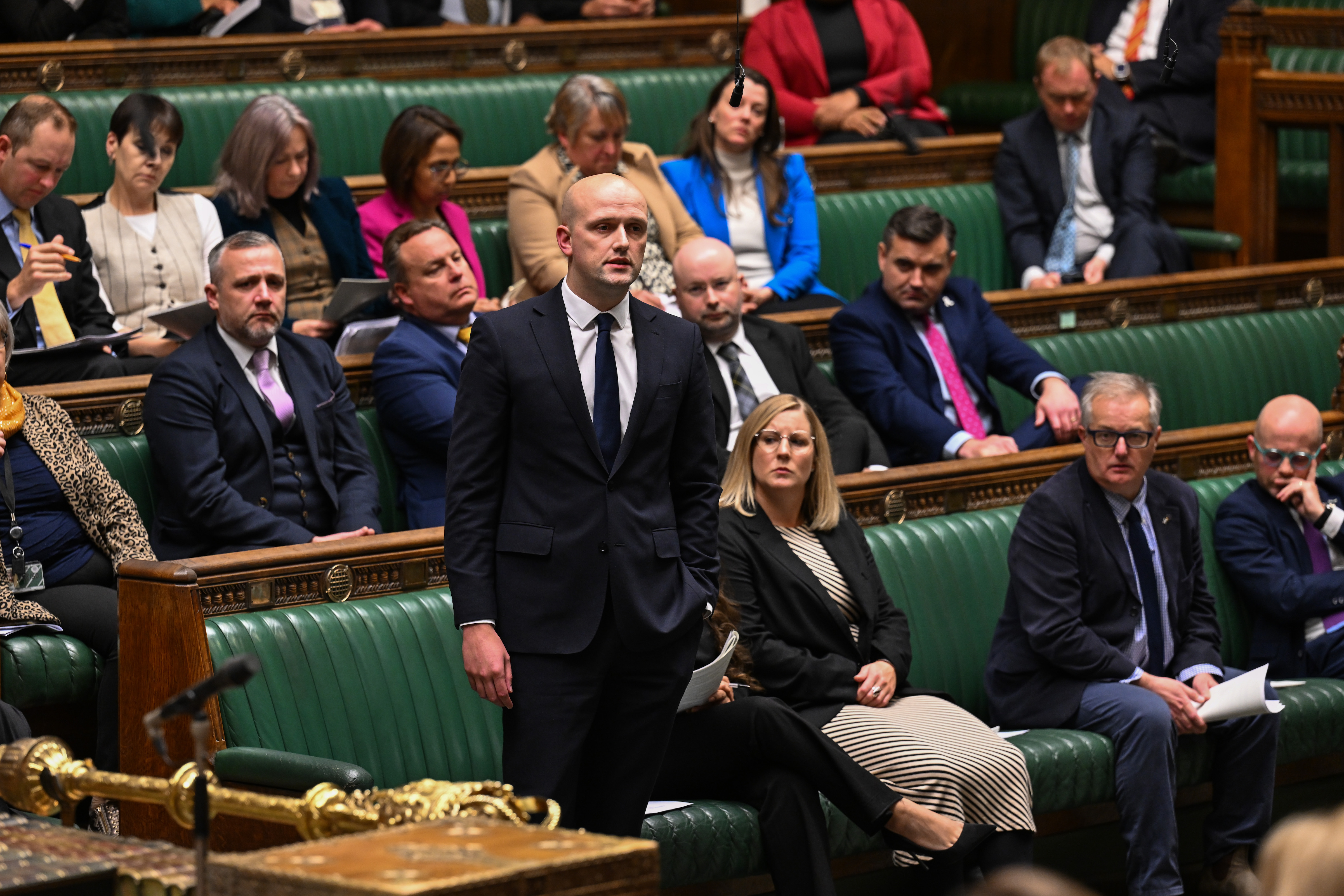What are Business Rates?
Business rates are property taxes paid by the occupants of non-domestic properties, typically those occupying commercial and industrial premises.
Local authorities collect the business rates which are due in their area and pass the money over to central Government. A proportion of these funds are then redistributed back to local authorities in line with a population-based formula.
Business rates are one part of the way in which local services are financed by local government.
Nonetheless, Central Government or the relevant Devolved government, sets and collects the rate of business rates, as a reflection of the considerable variations in ratable values and income that exist in different geographical areas.


The current business rates regime was introduced in 1990, along with the community charge or ‘poll tax’ (now reformed into the Council Tax), as a replacement for the old system of domestic and non-domestic rates. Business rates raise £25 billion per year in taxation for the government.
In recent years, the business rates system has come under considerable scrutiny, not least as a result of the growth of online retail and the move to home-working.
How are business rates calculated?
Business rates are calculated through a combination of the rateable value of a property, and the subsequent multiplier.
The rateable value (RV) of a non domestic property in England and Wales is assessed by the Valuation Office Agency, by the Scottish Assessors in Scotland, or the Land and Property Services Department in Northern Ireland. The rateable value is designed to reflect the rent that a property would expect to attract on the open market.
The rateable values for non domestic properties are reviewed regularly. The most recent revaluation came into effect in 2017. In England, the next revaluation is due to come into effect in 2023, having been postponed from 2021 due to the Covid-19 pandemic.
The second factor, the multiplier, is typically expressed in terms of a figure of pence in the pound. The multiplier is set by the UK Government in England, and by the Devolved governments in Wales and Scotland. In 2020/21, the standard multiplier in England was 51.2p (with a reduction to 49.9p for rateable values under £51,000). In Wales the equivalent standard multiplier was 53.5p whereas in Scotland the standard multiplier is 49.8p. In Northern Ireland the multiplier is calculated as a combination of figures from the Northern Ireland Executive and district councils in Northern Ireland.
The annual business rate liability for a business property is therefore calculated by multiplying the rateable value of a property by the multiplier. As an example, a standard non-domestic property with a rateable value of £50,000, where the multiplier was 51.2 pence in the pound, would be liable to annual business rates of £25,600.
Business rates are typically paid by businesses in equal monthly instalments.
When business premises are unoccupied, the owner of the property becomes liable for the associated business rates. Empty property is exempt for an initial three month period, or six months in the case of industrial or storage premises. This empty occupation relief is said to cost the exchequer as much as £1 billion a year.
Agricultural land and buildings, including fish farms, are currently not liable for business rates.
Who is eligible for rates relief
The current business rates system then operates with additional systems of rates relief. A number of the most prominent reliefs are outlined below:
Small Business Relief
A small business rate relief scheme has been in operation in England since April 2005. In England, those small businesses occupying premises with a ratable view of below £12,000 are entitled to 100% business rates relief. Properties with a rateable value of £12,001 to £15,000 are then entitled to a tapering discount from 0% to 100%, on the basis of 1% relief for every £30 of rateable value.
Properties with a rateable value of £15,001 to £50,999 are subject to the small business multiplier.
Small business relief is only applicable against the main property occupied by a business.
Charities
Properties which are occupied by charities, or predominately used for charitable purposes, are entitled to a mandatory reduction of 80%. The same applies to community and amateur sports club buildings.
Independent schools and private hospitals that are run by charitable bodies can also benefit from charitable relief. However, in Scotland, the Scottish Parliament removed the charitable relief on business rates from independent schools from 2020/21.
Rural relief
In England, additional rural relief is also available to pubs, petrol stations, and certain general stores when they are the only such business in a rural location and have a low rateable value.
Enterprise Zones
In England, businesses moving into Enterprise Zones for the first time are also entitled to a 100% discount on business rates for their first five years.
Discretionary Relief
The system also contains provisions for ‘discretionary relief’. In March 2017, the Chancellor announced a discretionary relief fund. This sum consisted of £180 million in 2017-18, £85 million in 2018-19, £35 million in 2019-20 and £5 million in 2020-21. This enabled local authorities in England to apply further discretionary relief to so called ‘hard cases.’
Covid 19 Relief
In 2020 and 2021 in response to the economic implications of the coronavirus pandemic, the Chancellor Rishi Sunak, introduced a further series of temporary business rate reliefs to a number of sectors including retail, leisure, hospitality, pubs, letting and estate agencies, and bingo halls. The Welsh Government announced a similar scheme. Local councils were compensated by central government for the associated loss of revenue from these reliefs.
Supplemental charges (Going the other way…)
In contrast to the various rates relief available, certain local authorities in England and Wales, are also able to levy a supplemental charge on top of standard business rates, under the Business Rate Supplements Act 2009.
Within England, these higher charges are currently only in operation for businesses located around the Crossrail development in London. Those businesses are currently subject to a 2% supplement.
2021 business rate reforms
In his October 2021 budget, Chancellor Rishi Sunak announced plans to reform elements of the business rates system.
These measures included plans for property revaluations to now occur every three years, proposals for a new business rate relief to support energy efficiency investments, and details of a new Improvement Relief such that those improving their property would not pay an increase in business rates in the first 12 months.
The Chancellor also announced that all business rates reliefs (small business rate relief, rural rate relief and charitable rate relief) would be extended to 2023. Sunak also subsequently announced a new 50% business rates discount for businesses in the retail, leisure and hospitaliy sectors.
In May 2022, the government announced plans for a Non-domestic rating bill in the Queen’s Speech. This bill will overhaul the business rates system to ensure firms have confidence that they are paying the right tax. As such it will introduce more frequent revaluations to ensure bills are more responsive to economic changes. The bill also proposes 12 months rates refliefs which companies make improvements to a property and 100% rates reliefs for low carbon heat networks.
The debate around business rates
Criticisms of the business rates regime
Business Rates are notoriously unpopular with many sections of the business community, particularly with high street shops and those firms with large physical operations. These business point to the substantial and permanent fixed costs, ones not related to revenues, that business rates place on their operations.
For companies wishing to expand, business rates are presented as a tax on investment. Whilst for those businesses that are struggling to survive and to sustainable profitability, business rates are regularly portrayed as the particular cost burden that makes their operations unviable.
Critics of the business rate system have also focused attention on the speed with which business rates have been rising in recent years. In 2020, the supermarket chain Tesco, claimed that its business rates bill had almost doubled to £700m during the previous decade.
The UK’s rate of business taxation on property is said to be the highest amongst the OECD nations.
The contribution of property taxation to GDP is said to be over 1.5% in the UK, compared to equivalent figures of 0.3% in the Germany, and 0.5% in France. The Confederation of Business Industry argue that these levels act as a meaningful disincentive for overseas firms to invest in the UK. The car maker Vauxhall has suggested that the UK accounts for two-thirds of its European property taxes but just 8% of its European floor space.
In recent years, the growth of e-commerce and online retailing has further turbo charged the debate around business rates. Because of the current regime, online businesses that do not maintain high tax retail locations and which instead use lower rated warehouse premises, are said to enjoy a cost base advantage that allows them to under-cut the prices of traditional retailers. This in turn is said to be contributing to many shops going out of business and the subsequent decline of the High Street.
Statistics would seem to provide some evidence as to the commercial advantage that business rates provide to online businesses.
The 2020/21 annual rates bill of the giant online business, Amazon, has been reported as amounting to £71.5 million, a figure which if true, would equate to just 0.37% of its retail sales. By contrast, the Centre for Retail Research (CRR) calculated the business rates paid by physical shops in 2019 totalled £7.1 billion, a figure which has been equated to 2.3% of their total retail sales.
Going forward, there are suggestions that the future revenue base from business rates may decline. Allied to the decline in traditional retail, it is speculated that the practices of home working that developed during the 2020/21 coronavirus pandemic, will lead to the need for smaller office premises in the medium term. Indeed, under the current rates regime, there is an incentive for companies to encourage their office based staff to continue to work from home, in the sense that it allows them to reduce their rent bills and their ensuing liability to business rates.
Arguments made to keep the current business rates regime
Despite the criticisms that are leveled against the business rates, there are a many who warn about rushing to overhaul the system.
In recent years, business rates have typically generated £30 billion a year in revenues for the government. This is a revenue stream that is consistent, reliable, and relatively easy to collect.
It is pointed out that the government cannot simply do without this source of revenue if it wishes to effectively fund public services. As such any reforms to the business rates system would inevitably have to be accompanied by alternative ways of generating equivalent taxation revenue from the business sector.
Moreover a number of commentators, most notably Paul Johnson at the Institute of Fiscal Studies, have highlighted that there is only a limited amount of land for shops. These demand pressures will continue to influence prices. Accordingly any cuts in business rates in the medium term, will simply lead to an equivalent increase in the actual rents being charged by the landlord. In this situation, physical retailers would still be left struggling in comparison to their online rivals, in a situation that would neither help those businesses nor the taxpayer. Rather it would serve to enrich land owners and commercial property investment funds.
Alternatives to Business Rates
For those set on reform, a number of alternatives have been suggested to the business rates regime.
One of the most vocal calls for reform involves the introduction of an online sales tax, equivalent to a 2% charge on the value of goods sold online. It is argued that such a move would work to address the significant tax advantages that exist for those selling online.
Tesco has suggested that such a tax could raise £1.5 billion per year, and called for this to be passed on to traditional retailers through a 20% reduction in their rates bill. Others suspect that an online sales tax would instead be presented as a standardisation measure, with its additional revenues retained by the government as part of efforts to restore the public finances post the coronavirus pandemic.
A second suggestion for reform has focussed on a taxation regime that is based around land values, rather than the rental value of properties. Sometimes referred to as the ‘Commercial Landowner Levy’, these proposals would exclude premises and machines from the calculations. Although landowners would in all likelihood pass their new costs straight back to their tenants in higher rents, thereby retaining many of the existing systems drawbacks, advocates of this levy argue that this approach would at least eliminate anomalies relating to empty buildings. Currently, the system is said to actually incentivise the demolition of empty buildings.
A third proposal has focussed on a local business tax, one which in effect would constitute a local sales tax, equivalent to local VAT. Such an approach would tighten the relationship between local government accountability and the revenues being raised, but it is also presented as a solution that would be expensive to administer and one that would leave local government finances far more exposed to the whims of the wider business cycle.
Other smaller reforms have involved the idea of introducing more frequent and regular rent revaluations; of removing agricultural relief (which is said to subsidise that particular sector of the economy at the expense of all others); and of introducing new multiplier rates for different sectors or different sizes of businesses.
Quotes
“Business rates are the third biggest expense for many small businesses after rents and wages. It is the only tax not related to the ability to pay, so it places a disproportionate burden on small businesses” – Federation of Small Businesses – 2013
“In the medium term that we have to find a better way of taxing the digital part of the economy-the part that does not use bricks and mortar” – The Chancellor, Philip Hammond, 2017 Budget Statement
“Cutting business rates will help individual high street stores in the short run, but will not help in the longer run. It is a misunderstanding of basic economics to think otherwise. The biggest winners from a cut in business rates will be the biggest landowners – the Duke of Westminster, the Queen – and not the high street shops, or their customers”. – Paul Johnson, Director of the Institute of Fiscal Studies writing in the Times.
Labour to call for an increase in digital sales tax to fund a cut in business rates


























